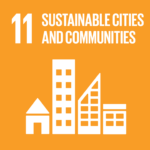Extreme weather reached dangerous new heights in 2024. This year, Singapore had 122 more dangerous heat days due to climate change.
SINGAPORE — In 2024, Singapore experienced 122 extra days of dangerous heat, a sharp contrast to the mere four such days it would face in a world without climate change. This alarming statistic, revealed in a climate report published on December 27, underscores the growing threats posed by global warming to this equatorial city-state.
RELEVANT SUSTAINABLE GOALS




The report, conducted by World Weather Attribution (WWA) and Climate Central, classified “dangerous heat days” as those with mean temperatures hotter than the warmest 10 percent observed from 1991 to 2020. It paints a stark picture: Singapore’s unique climate is becoming an increasingly vivid marker of the global climate crisis.
Climate Change: A Localized Threat with Global Roots
Unlike regions with fluctuating seasonal temperatures, Singapore’s consistent tropical climate amplifies the impact of global warming. “The shift in temperature distribution here is more pronounced due to the relative stability of its climate,” explained Joseph Giguere, a research associate at Climate Central.
At 27.4°C, the mean daily average temperature across Southeast Asia in 2024 was 0.8°C higher than the historical baseline. This data was extrapolated from the ERA5 dataset by the European Union’s Copernicus Climate Change Service, which examined temperature trends across 220 countries and territories.
A Global Phenomenon with Local Consequences
Globally, the study found that climate change added 41 extra dangerous heat days per person in 2024. Countries near the equator, such as Nauru and other small island states, bore the brunt, with the highest increases in extreme heat. In contrast, South Korea saw only 12 additional days, highlighting the disparities in climate impacts.
For Singapore, these added heat days pose unique challenges. The nation already uses the Wet Bulb Globe Temperature (WBGT) metric to measure heat stress, factoring in humidity, wind speed, and solar radiation. A heat stress advisory launched in 2023 urges citizens to minimize outdoor activities during WBGT levels of 33°C or higher. Yet, the strain on public health systems and urban infrastructure remains a growing concern.
Extended exposure to dangerous heat has profound health implications, from heat exhaustion to fatal heat strokes. Singapore’s densely urbanized environment exacerbates these risks, as concrete structures trap heat, amplifying temperatures. The National Environment Agency (NEA) has emphasized the importance of reducing heat-related illnesses through public advisories, but the broader societal impacts—such as increased hospitalizations—demand closer monitoring.
Addressing the Escalating Threat of a Warming World
The report doesn’t stop at warnings; it calls for immediate global action. Recommendations include accelerating the transition away from fossil fuels, enhancing early warning systems for extreme weather, and providing international financial support to help vulnerable nations adapt.
Dr. Friederike Otto, lead scientist at WWA, stressed the urgency: “We have the technology and knowledge to transition to renewable energy and reduce demand. By 2025, countries must step up to replace fossil fuels with sustainable alternatives and prepare for the realities of extreme weather.”
As a coastal and equatorial nation, Singapore is uniquely positioned to act as both a warning beacon and a leader in tackling climate change. The country’s initiatives, from adopting renewable energy to urban cooling strategies, align with the report’s call for systemic change.
Yet, the path forward requires more than localized solutions. Global cooperation, robust international climate policies, and significant investments in sustainability are essential to mitigate the intensifying impacts of climate change. Without such concerted efforts, the “dangerous heat days” will not only rise in Singapore but across the world.




